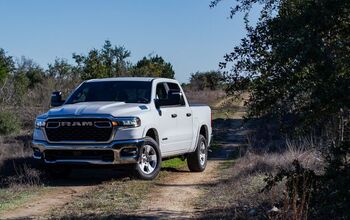Under the Hood: What is Motor Oil?

It’s a cliché analogy, but oil really is the lifeblood of a vehicle’s powertrain. Without its friction-cutting properties engines would literally grind to a halt, failing in spectacular fashion. Connecting rods would punch holes in blocks, camshafts would pulverize themselves and bearing inserts would spin like the blades of a jet turbine.
The risk of catastrophic failure underscores the importance of regular “transfusions.” Thankfully oil changes are a relatively simple task, and one just about any weekend mechanic should be able to accomplish with a few basic hand tools.
As a process it’s fairly simple, but the science behind lubricants is worthy of a Nobel Prize. The number of different engine oils on the market today is dizzying. Consumers are bombarded with choices. Have you walked down the fluids aisle of your local auto parts store lately? There are a lot of choices. Hopefully this week’s installment of “Under the Hood” demystifies the world of engine oil.
What Role Does Oil Play Inside an Engine?
Just like the blood coursing through your circulatory system oil performs many functions inside an engine. As mentioned, it cuts down on friction between moving parts, but it does so much more than that.
Oil keeps things clean. Detergent additives help break up sludge deposits so they’ll get trapped in the filter and removed at the next change. This prevents crud from building up inside oil passages, which can lead to major problems down the road.
Oil cools critical components. Zinging an engine to 7000 rpm and slamming it into gear generates a lot of heat. Coolant isn’t the only way powerplants can keep their temperatures down. Lubricant helps carry away and dissipate excess heat, protecting internal parts.
Lastly, oil inhibits corrosion. Dinosaur juice – or its modern synthetic counterparts – prevents ferrous metal and other alloys from coming into contact with oxygen, their mortal enemy. By blocking O2 corrosion is greatly reduced.
The Numbers Game: 5W-This, 20W-That
One of the most noticeable things on a jug of oil is something called the viscosity index. It’s the part that usually has two numbers separated by the letter “W.” 5W-20 and 10W-30 are some of the most common ones on the market today.
These are known as multiviscoisty, or multiweight oils and most automakers recommend them. They’re designed to flow easily in the cold but they’re also engineered to behave like a thicker lubricant at higher temperatures. The two numbers and the letter “W” are dead giveaways of a multiviscosity oil.
But what do these numbers mean and what does “W” stand for? Pete Misangyi, supervisor of fuels and lubricants at Ford Motor Company said, “it’s two parts, the W defining cold start – how the oil will perform at low temperatures. Both flow and cranking speeds of the engine are defined by the W grade.” He said when you see the letter “W” think winter. The smaller the digit preceding the “W” the lighter the oil and the easier it flows at low temperatures.
Misangyi said the number after the “W” defines an oil’s hot-performance. Basically it’s a measure of the lubricant’s viscosity (thickness) at 100 degrees Celsius, which is the approximate operating temperature of a gasoline engine.
One trend among automakers is recommending thinner oil than in decades past. Lower-viscosity lubricants are easier to pump through an engine, which gives a slight boost to fuel economy. Misangyi said Ford and Honda were some of the first manufacturers to recommend lightweight 5W-20 in their vehicles. He also said “a side benefit of 5W-20 is some of our engines are cleaner.”
But just because this lightweight oil improves efficiency doesn’t mean it can be used in any old vehicle on the road. Engines have to be specifically designed for it. According to Misangyi, the finishes used on internal surfaces have to be changed, oil pumps and bearing designs need to be modified and component tolerances have to be adjusted. “Really following what’s in the owners’ guide is important,” he said. Using too thin of an oil in an older car can lead to excessive oil consumption.
Some drivers may worry about lighter oil’s ability to protect critical engine components. Misangyi said, “we take it pretty seriously, both for engine durability, oil life and reduced maintenance costs.” Again, it’s best to follow manufacturer recommendations.
Chemical Cocktail: The Ingredients of Engine Oil
Whether it’s pumped out of the ground or formulated in a laboratory there’s a lot more to engine oil than just oil. Believe it or not, modern lubricants are chemical cocktails on par with prescription drugs. According to Z. George Zhang, PhD and CLS manager at Valvoline’s research and development lab in Lexington, Ky. only about 80 percent of oil is actually oil. The other 20 percent is made up of additives, things like detergents, dispersants and friction modifiers.
But these chemicals don’t just help the oil flow at different temperatures. There are additives that protect against wear, ones that control deposits and still others that prevent corrosion.
To ensure they’re getting the best oil for their vehicle the average consumer should look for an American Petroleum Institute (API) certification mark on the container. Misangyi said the famous starburst icon is a sign of quality lubricant, “that API certification mark is something we’ve supported from the beginning.” He said it was first introduced in the mid 1990s. Curiously, he was actually part of the original team that created the standard. He said, “it’s kind of a ‘Good Housekeeping Seal of Approval’ for oil.”
Heavy-Duty Oil, Heavy-Duty Engines
Gasoline and diesel engines have a lot of things in common. They both have pistons, rings, crankshafts and valves, but that’s where the similarities end. Aside from running on completely different fuels, their combustion processes are totally dissimilar, too. Not surprisingly these internal-combustion engines have unique oil requirements.
According to Misangyi, lubricants designed for diesel engines have “significantly higher detergency,” because, “there’s a lot of soot that gets in the oil.” Blame the fuel, super-high high compression ratios and long change intervals for the extra additives.
But what’s great in one application won’t necessarily perform very well in another. “Detergency can counter some of the friction modifiers we put in high fuel economy engine oil,” said Misangyi. “It’s a balance.”
Oil designed for diesel engines could harm a gasoline engine, and vice versa. Again, follow the manufacturer’s recommendations for what kind of oil to use. “If you go to a quick-lube make sure they do, too,” Misangyi said.
Synthetic Oil: The Future is Yesterday
Beyond viscosity, API certification and cold-weather performance, there’s another facet to oil: synthetic versus conventional. This is a debate that’s raged for decades and it’s one that’s worthy of an entire article on its own. Point you internet browser of choice over to AutoGuide.com next week when “Under the Hood” compares these two kinds of lubricants.
GALLERY: What is Motor Oil?
Discuss this story at Engine-Care.com

Born and raised in metro Detroit, Craig was steeped in mechanics from childhood. He feels as much at home with a wrench or welding gun in his hand as he does behind the wheel or in front of a camera. Putting his Bachelor's Degree in Journalism to good use, he's always pumping out videos, reviews, and features for AutoGuide.com. When the workday is over, he can be found out driving his fully restored 1936 Ford V8 sedan. Craig has covered the automotive industry full time for more than 10 years and is a member of the Automotive Press Association (APA) and Midwest Automotive Media Association (MAMA).
More by Craig Cole



































Comments
Join the conversation
so this story still doesn't answer my biggest question: how to I get rid of the old motor oil when I'm done changing it? A cop gave me a warning last week when he saw me putting it down the storm drain, but I don't know where else to take it. It's not like I can stick it in a trash bag and give it to the garbage guy. My wife gets pissed when I put it down the bathtub drain too.. Apparently it's a pretty nasty fine. Anyone know what I'm supposed to be doing here? I've got a lot built up between our two cars...